Today was a very interesting day in our yard for me as my dear friend and colleage, Finn, arrived. I asked him to have a detail on GEKKO done that was bothering me since I had taken her out for sailing the first time. This boat is fast as hell, as you may know. The First 27 SE or formerly known as Seascape 27 will jump to life even at the slightest breeze. In this, it was no problem for me to reach an SOG of +10 knots at roughly 90 degrees TWD with my kids aboard. But – well, there´s always a “but” – I noticed a very load groaning and moaning in the rudders.
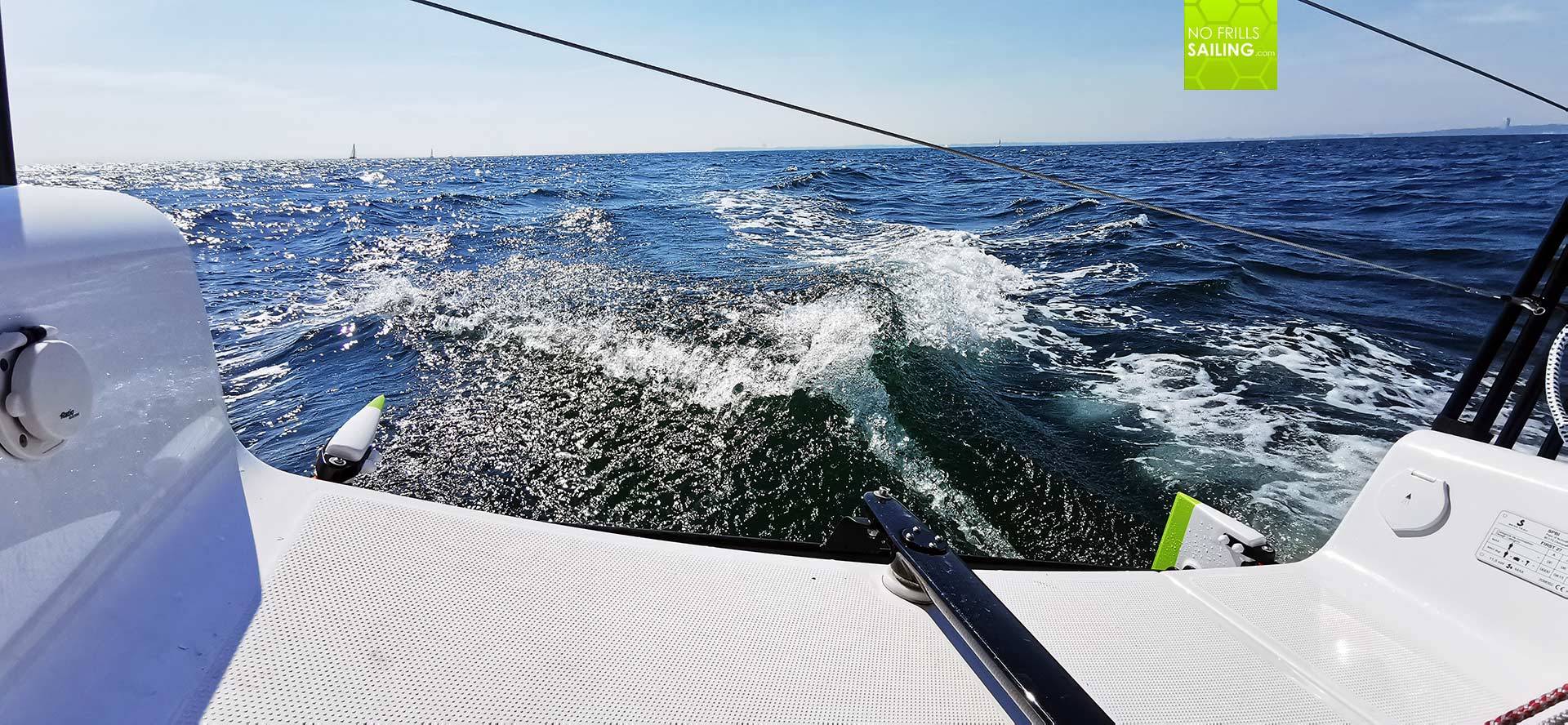
Back in my berth I checked the hinges and screws but did not find anything suspicious. But the second time out, which also was my big summer sailing trip in GEKKO, I had a close eye on it. Or let´s call it, a close ear. The groaning starts at 5 knots SOG as a slight and also rather nice sound. It gets more and more annoying and louder the faster the boat will sail. At 7.5/7.6 knots she will start planning, making rapid rudder movements by the autopilot necessary. The sound intensity grows and the frequency gets a higher pitch. Reaching 9.5 knots SOG the volume of the sound is so loud and frightening, that it is louder than the sound of the wind! More than 10 knots is unbearable, I really feared the rudder blade would hit resonance frequency and be torn to pieces!
Treatment of the Rudder Blades
Now, I started to talk to Tomo and Andraz of Seascape about that phenomenon, which is a pretty widespread thing, I guess. Also, many of my more race-oriented sailing friends as well assured me that vibrations in the rudder, caused by the trailing edges of the blades, are the reason. What was giving me pretty hard time thinking about it was the fact that on my own boat apparently it was not a symmetric phenomenon but almost exclusively limited to the starboard side rudder blade. Anyways, as Andraz urged me: “Sand off the trailing edges of both blades and check it, it should be gone.”
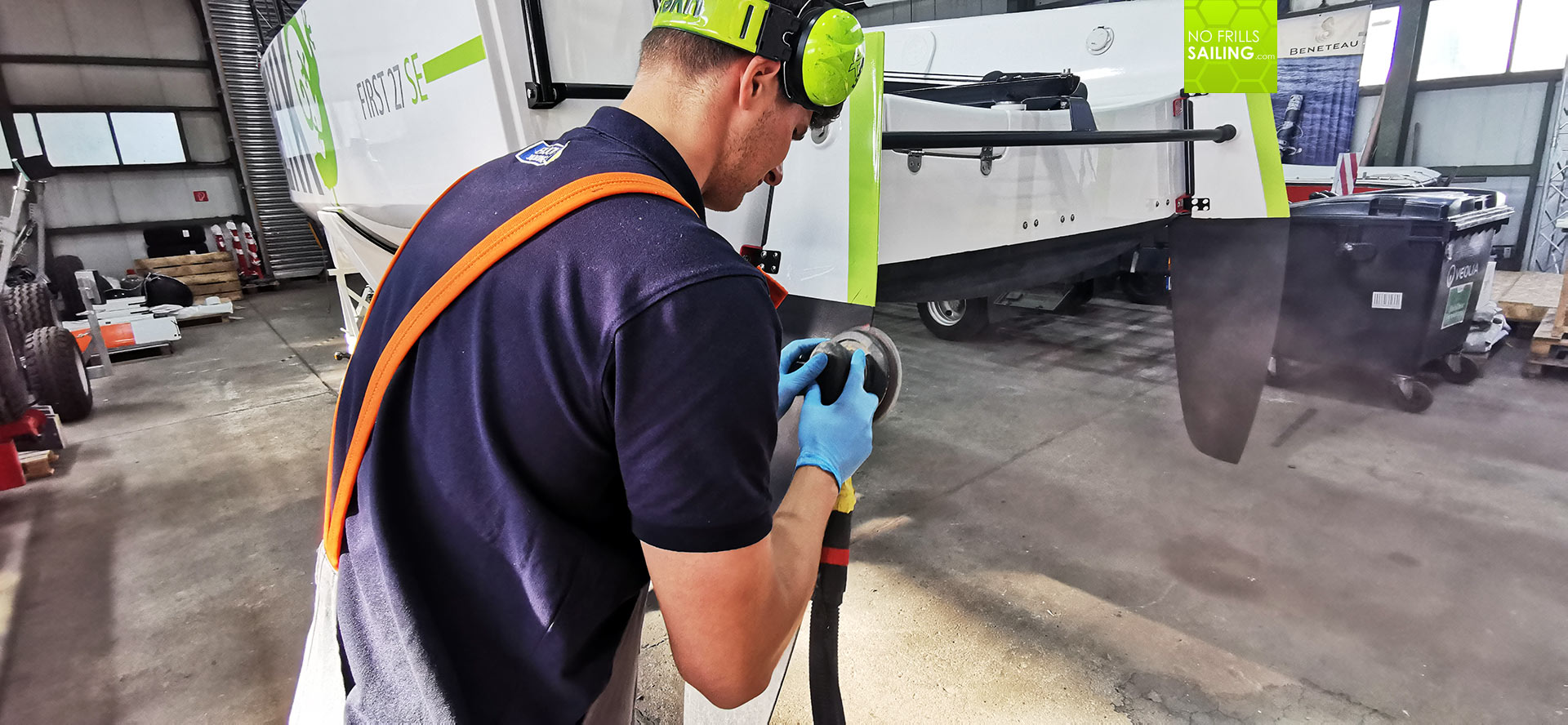
Said and done: As my boat is out of the water and back in our company we are anyway in the process of refreshing the antifouling so that it was the perfect time to tackle this task. Finn began to sand down the antifouling and priming layers rudder´s edges to prepare the surface for the grinding action. But, I asked myself, how should we sand down the edges of the rudders? Inside out or Outsides in?
Sanding down the edges: But which way?
Talking to Tit Plevnik on the phone, who had as well a pretty wide range of experiences with sanding rudder blades-edges, assured me that the way you do it is inside out. I would have thought the other way round, but, well, if the pros say it, we do it. So Finn readied his orbital sander with a 240 grain paper and started to work.
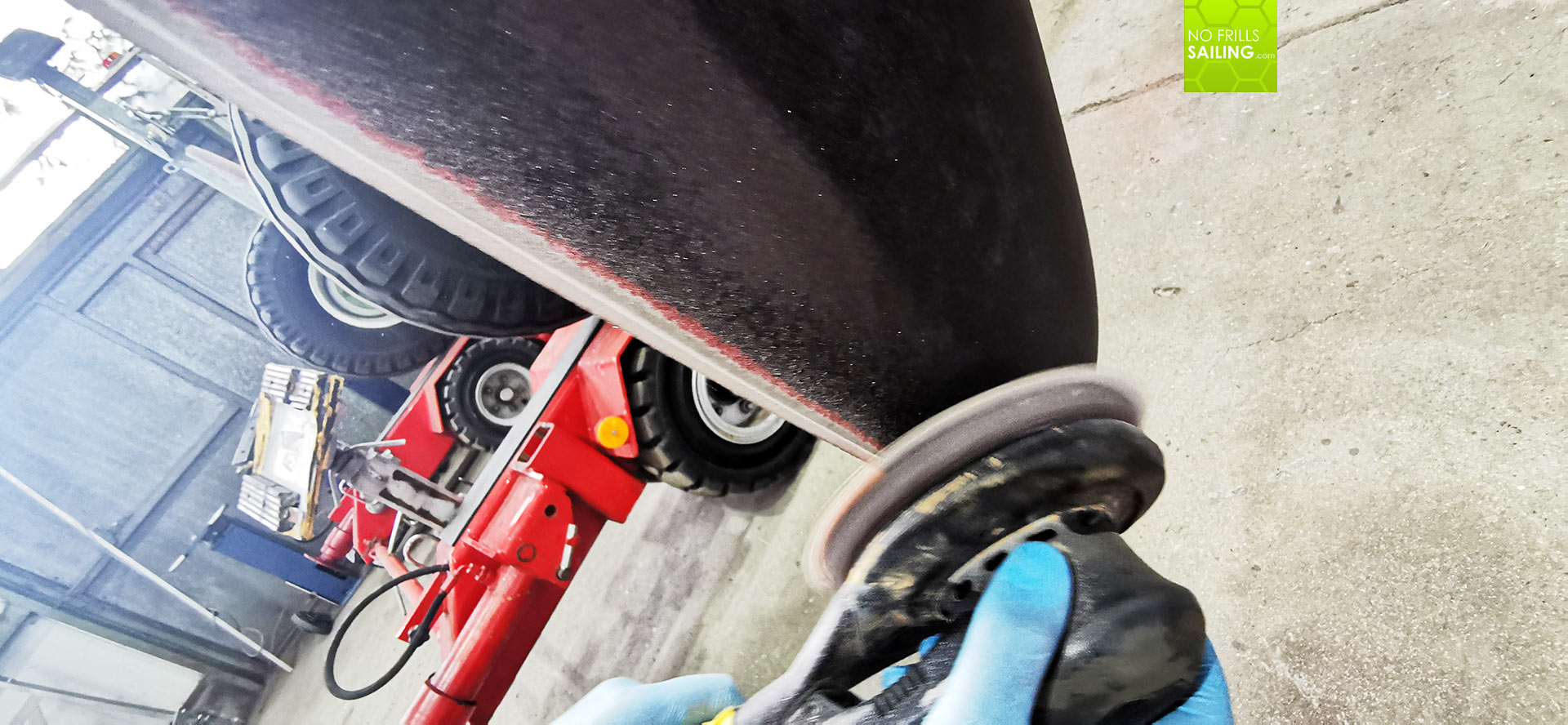
From top side down to the tips he sanded down the trailing edges of the blades and I was excited to see him operating with firm hands taking off more and more material from the blades. In this, I thought, it is always good to have trained and skilled craftsmen at hand – thinking back to my own trials as boat builder in refitting my first boat with more or less competence. It too him no more than five minutes to achieve quite an impressive outcome.
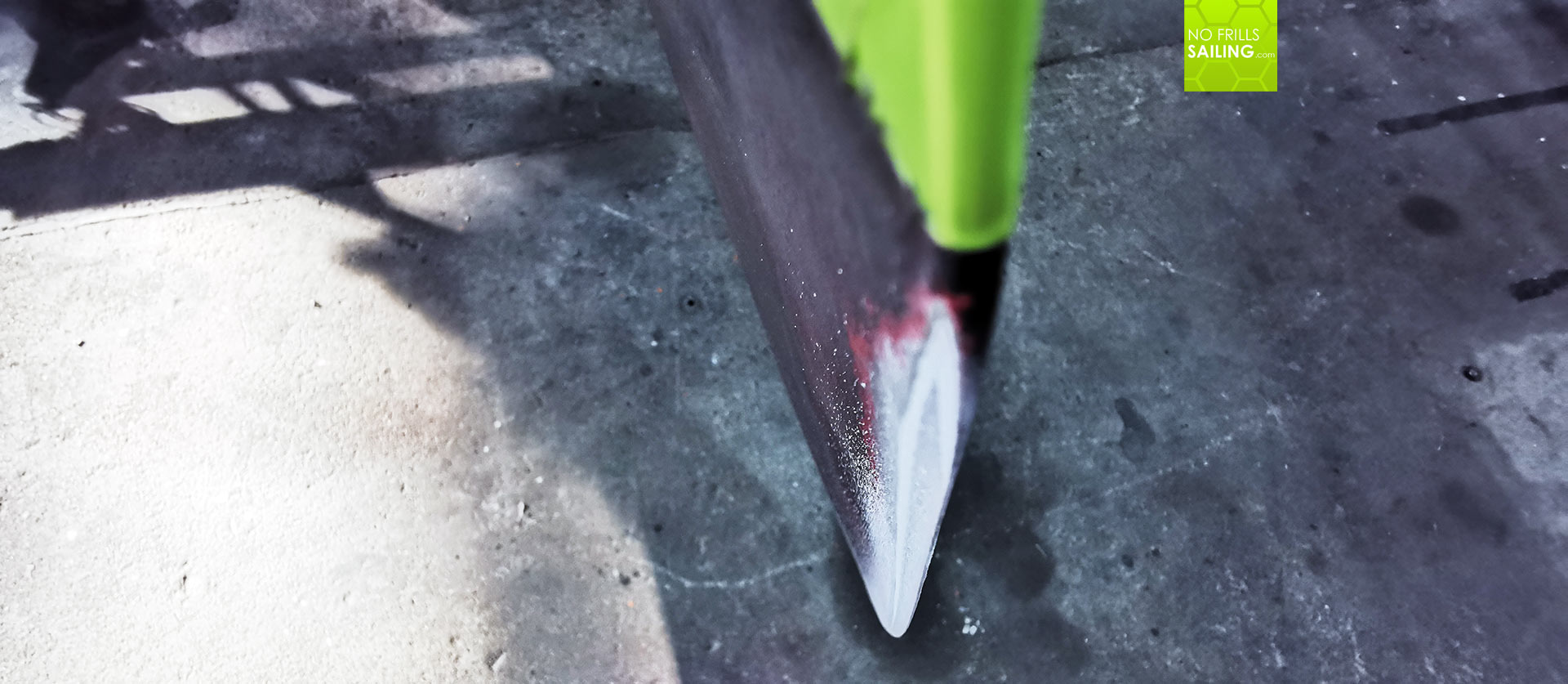
“Don´t send it down all too sharply …”, Tit had warned me: “I know from my own experience that if you do it razorlike sharp you may injure your knees when climbing up and down the bathing ladder.” Well, I am not too much into swimming, but I told Finn. In the end, the new treated trailing edge is sleek and sharp but not like a Samurai´s sword. Nice work, mate!
Ready for live testing
As a last step, Finn mixed some fresh drops of Gelcoat to seal the raw layout and make it waterproof. Now the edges are white and fresh and will dry out the coming days. Within the coming weeks we will refresh the antifouling and I am eager to test whether sanding down the trailing edges of the rudder blades did erase the vibrations and the awful loud moaning of my boat.
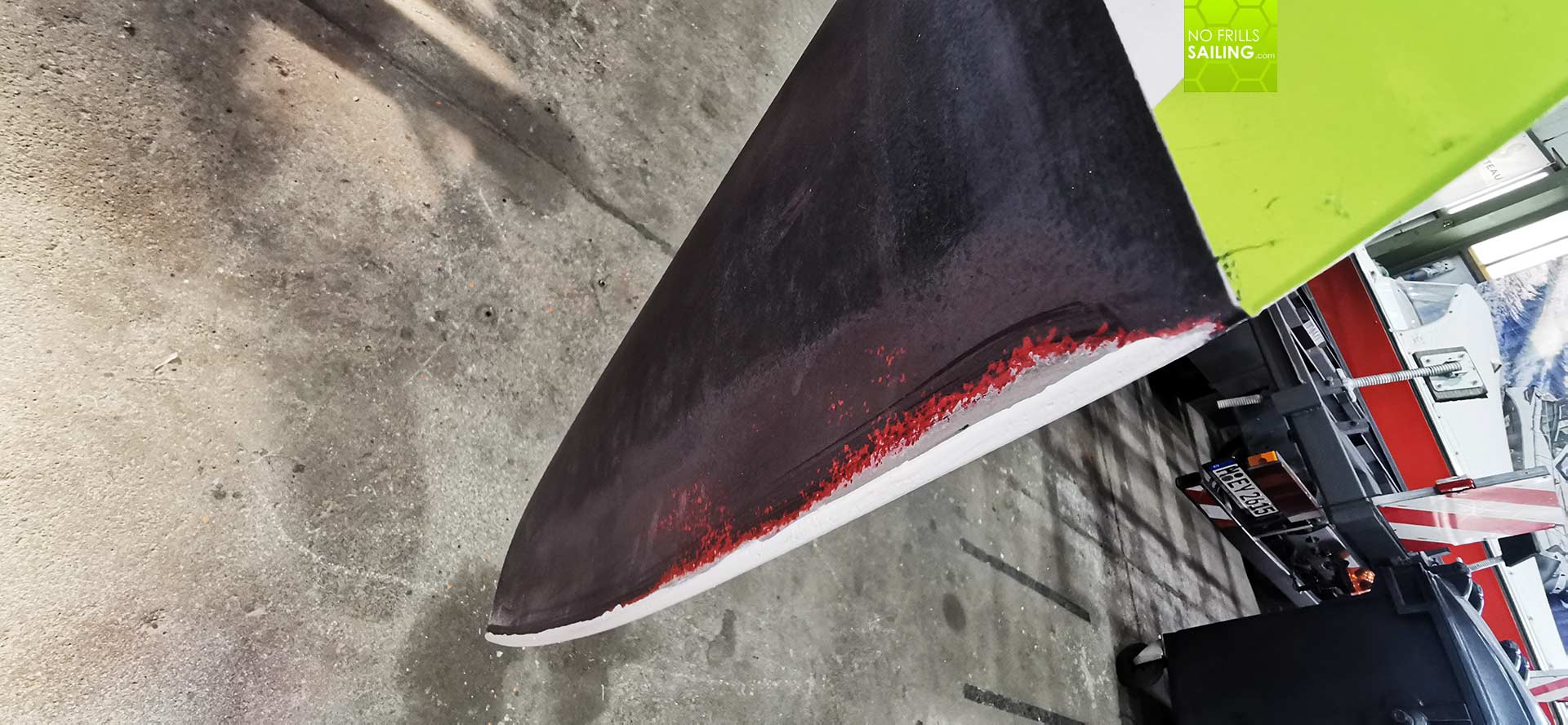
In the end GEKKO will hit the water 2022 as early as possible and I have top priority on my list to sail many, many more miles on the boat that I did this year. Possibly to Sweden again, maybe also to Finland and beyond. It´s these small steps of improvement which keep me motivated during off-season on the dry and grow pleasant anticipation for the coming sailing season.
You may also be interested in reading these articles:
All Seascape-related articles on my own and other Seascape/First-boats
Black hole yacht refit?
Go small – go now!
